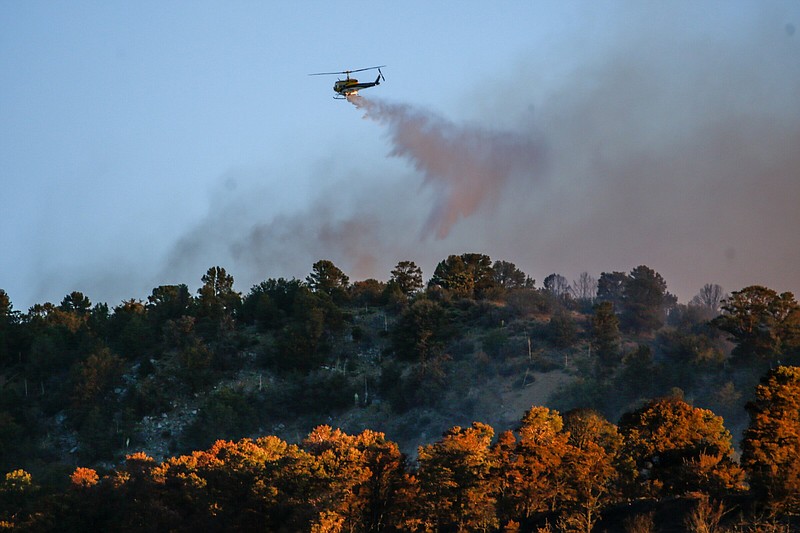FLAGSTAFF, Ariz. -- The Western U.S. on Monday marked another day of hot, dry and windy weather as crews from California to New Mexico battled wildfires that had forced hundreds of people to leave their homes.
Several hundred homes on the outskirts of Flagstaff, Ariz., were evacuated and the Arizona Snowbowl ski resort was closed as a precaution because of a wildfire -- the second to hit the area this year.
Crews were expecting gusts up to 50 mph as they battled the blaze that has burned through parts of the footprint left by another springtime fire that destroyed more than two dozen homes. No homes have been lost in the fire reported Sunday that has burned about 8 square miles.
"It's literally like deja vu," said Coconino County sheriff's spokesman Jon Paxton. "We are in the same exact spot doing the same exact thing as we were a month and a half ago. People are tired."
U.S. Forest Service law enforcement officers cited a 57-year-old camper for lighting toilet paper on fire and placing it under a rock Saturday near the origin of the Arizona wildfire. The fire was reported a day later. Court documents show the man told authorities he tried to put the fire out with his sleeping bag, but his attorney said in federal court Monday that doesn't mean his client was responsible for sparking the blaze.
In Alaska, forecasters have warned that many southwestern fires have grown exceptionally over the past week, which is unusual for that area. Southwest Alaska normally experiences shorter periods of high fire danger because intermittent rain can provide relief, but since mid-May the region has been hot and windy, helping to dry out vegetation.
Favorable weather Monday helped slow progression of a tundra wildfire just over 3 miles away from an Alaska Native village. Moderate temperatures and a shift in the wind that had been driving the fire toward St. Mary's will allow firefighters to directly attack the flames and increase protections for the Yup'ik community.
The lightning-sparked fire is estimated at about 193 square miles. It's burning dry grass and shrubs in southwest Alaska's mostly treeless tundra.
In California, evacuations were ordered for about 300 remote homes near a wildfire that flared up over the weekend in forest land northeast of Los Angeles near the Pacific Crest Trail in the San Gabriel Mountains.
The blaze saw renewed growth Sunday afternoon and by midday Monday had scorched about 1.5 square miles of pine trees and dry brush, said fire spokesperson Dana Dierkes.
Aside from mandatory evacuations for some, the remainder of Wrightwood, with about 4,500 residents, was under an evacuation warning. Several roads also were closed.
The fire was 18% contained.
Fire conditions were elevated because of warm and dry weekend weather across Southern California.
In Northern California, a 50-mile stretch of State Route 70 was closed indefinitely Monday after mud, boulders and dead trees inundated lanes during flash floods along a wildfire burn scar.
Several drivers were rescued Sunday evening from debris flowing on the highway when hillsides burned bare by last year's enormous Dixie Fire came loose. No injuries were reported.
The causes of the latest California fires were under investigation.
Strong winds sent embers across U.S. Route 89, the main route to the turnoff for the Grand Canyon's east rim entrance, through the Navajo Nation and up into Utah. Many people commute between the reservation and Flagstaff for work. Parts of the highway remained closed Monday.
Meanwhile, firefighters worked to contain a small wildfire burning in juniper and pinion pine that briefly caused evacuation orders Sunday in the San Luis Valley's Rio Grande National Forest in southern Colorado.
The National Weather Service issued red flag warnings for high fire danger in central and southern parts of Colorado as well as parts of Arizona, New Mexico and Utah.
Information for this article was contributed by Christopher Weber, Mark Thiessen, Jim Anderson and Susan Montoya Bryan of The Associated Press.
